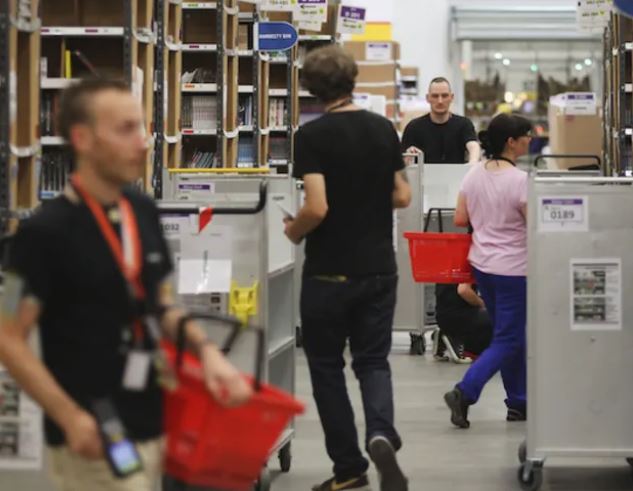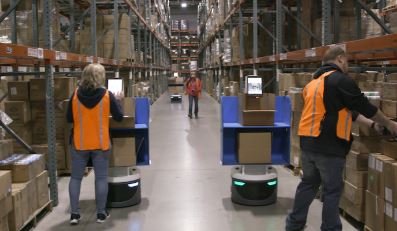With almost 8% year-over-year growth in the e-commerce industry, it’s just a matter of time before companies will see increased demand if they haven’t already. With it comes the challenge of scalability, causing business owners and operations leaders to scour the internet and their network for solutions. Well, look no further, as this introductory guide to ‘goods to person’ automation will help answer some common questions.
What is goods to person, and why does it help?
Distribution centers have historically been very manual operations. Push a cart here, pick the items on that list, and push it back to be packed. Although it is a simple process, there is a lot of wasted time and energy spent walking a cart around. In fact, the average picker can walk as much as 7 miles per day, causing fatigue and high turnover.
items on that list, and push it back to be packed. Although it is a simple process, there is a lot of wasted time and energy spent walking a cart around. In fact, the average picker can walk as much as 7 miles per day, causing fatigue and high turnover.
This is where robotics and automation come in. Instead of a person moving the products around, let’s leverage technology to move them to your pickers so they can keep doing what they do best: picking. This simple change results in more efficiency, lower labor costs, higher morale, and reduced need for temporary labor during busy seasons, which can carry their own set of challenges.
What types of goods to person technologies should I be looking at?
The better question is, where is my business in its growth journey, and what technology best suits my needs now? With subscription-based models and FMV leasing, you have the flexibility to use technology for the next 3-5 years and then upgrade to something else as your needs change without worrying about selling it or losing out on an entire capital investment.
The simplest place to start, especially for seasonal distribution centers, is the Locus Robotics Origin. These robots will meet a picker in the aisle at the exact pick location and display a photo, quantity, and SKU of the product to be placed in one of the few bins it is transporting. Once all its bins are full, off to the packing station it goes to drop them off. This keeps your pickers in the aisles and the robots moving the product. With typically three robots per picker, they stay busy keeping the robots filled with orders. The best part is that due to their subscription-based model, Locus will send you more robots during the holiday season and take them back after, so you are only paying for what you need when you need it.
Origin. These robots will meet a picker in the aisle at the exact pick location and display a photo, quantity, and SKU of the product to be placed in one of the few bins it is transporting. Once all its bins are full, off to the packing station it goes to drop them off. This keeps your pickers in the aisles and the robots moving the product. With typically three robots per picker, they stay busy keeping the robots filled with orders. The best part is that due to their subscription-based model, Locus will send you more robots during the holiday season and take them back after, so you are only paying for what you need when you need it.
On the other end of the spectrum, businesses deep into their growth journey typically require a more extensive system capable of super speed and massive amounts of storage. This is where automated storage and retrieval systems, like the OPEX perfect pick and Autostore system, come into play. They store your product from floor to ceiling and automatically convey them to your workers to be packed out straight from the systems bins. Connecting with your inventory system makes the pick, pack, and ship process a seamless and high-speed experience. These systems can also be added on to, scaling up alongside your business.
Where do I start?
With these types of systems and many more in between, it can be hard to navigate all your options. Finding and working with a local systems integrator that specializes in all technologies like Abel Womack is the best path to analyze your needs, conceptualize a design, and implement a turnkey solution. Technology can be complex, so working with an end-to-end solutions provider to tie the new systems in with the old while providing fast, local, and reliable support is critical to a headache-free transition.
Start your automation journey today and contact Abel Womack for a free consultation.



Leave a Reply
You must be logged in to post a comment.